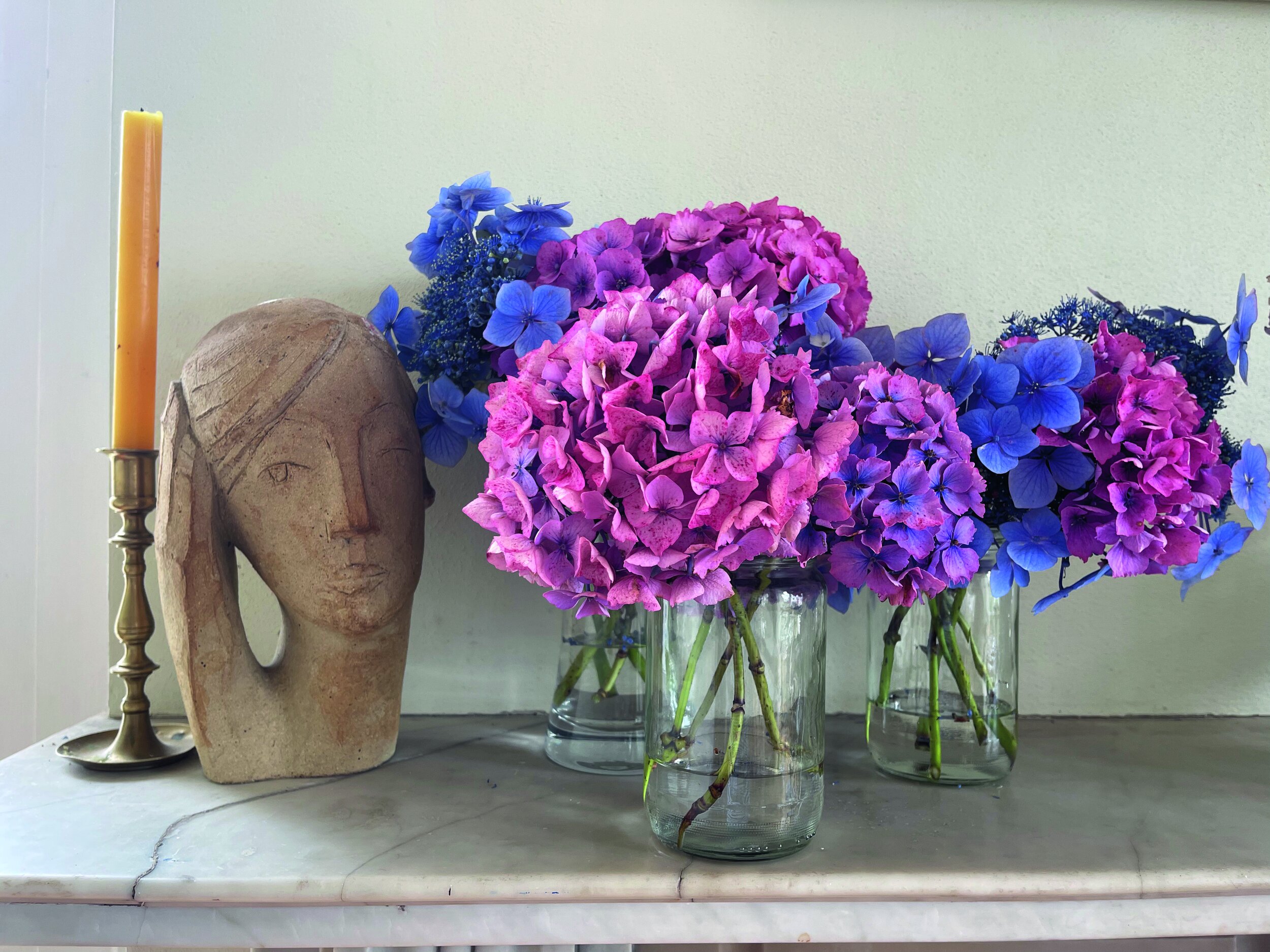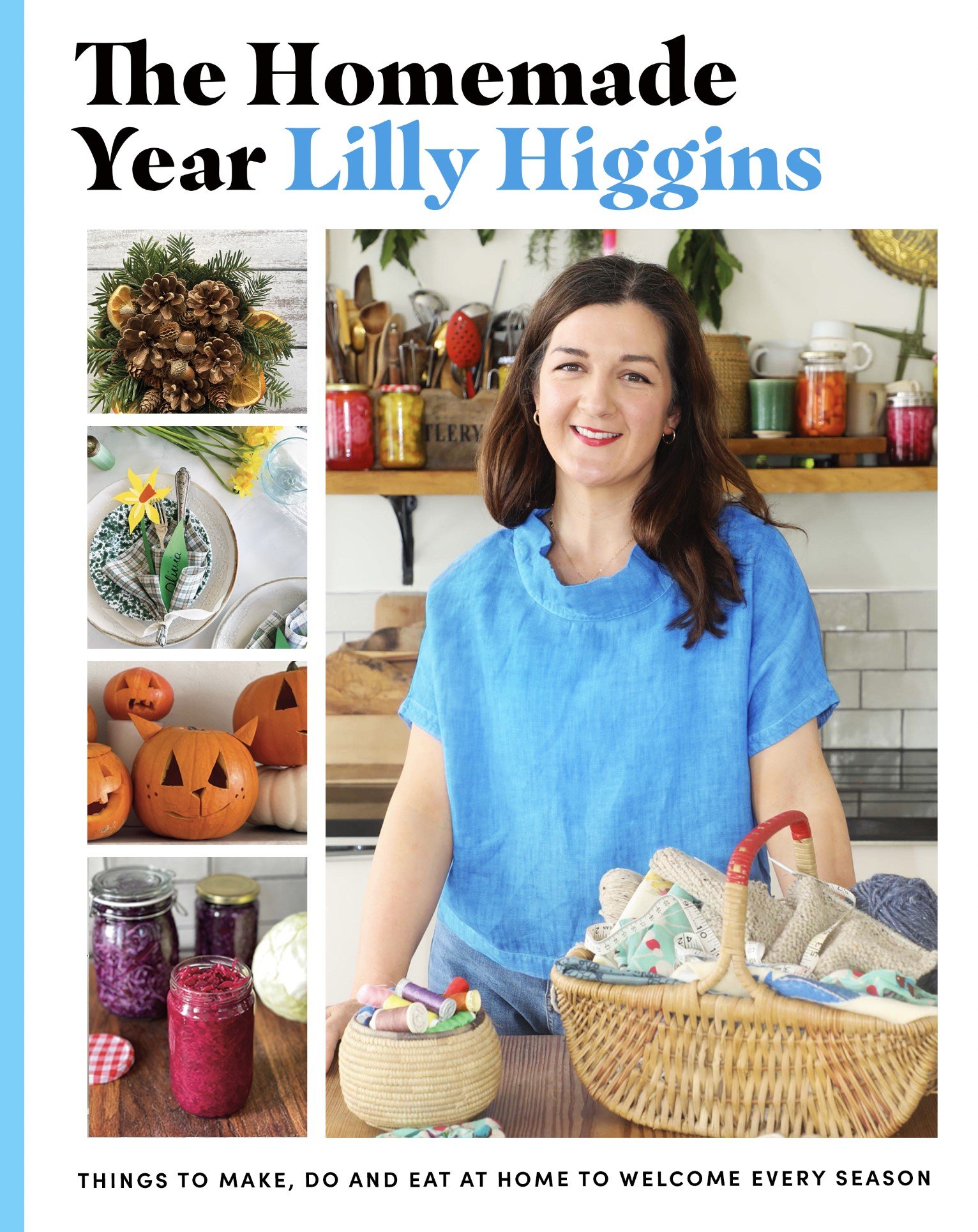Dried Hydrangeas
Lilly Higgins’ new book celebrates the seasons in all sorts of creative ways. Here she suggests bringing the garden home by drying out hydrangeas.
Hydrangeas are having a moment, aren’t they? My granny was immensely proud of her hydrangeas. She moved from her old farmhouse in the 1970s and built a new, modern house complete with rows of bright hydrangeas alongside the driveway and thick, dark green conifer hedging. I always remember how much she loved the pink and blue flowers. She would never pick them and bring them indoors, but she would set up her deck chair outside alongside them, and sit in the sun with her legs outstretched as all the colourful fluffy flowers also gazed south towards the sun. The hydrangeas were always the first things we commented on when we wandered up the driveway, admiring them aloud as we drew closer to the house.
My favourites in my own garden are Runaway Bride – it’s the most floriferous, producing six times more flowers than the average hydrangea. It has beautiful white flowers with such a classic look. I also adore the conical Limelight variety and Blushing Bride: its white flowers mature to a light pink or light blue, depending on soil pH. I’m also totally amazed by the growth of my climbing hydrangea. It clings to the wall like ivy and is such a lovely plant. Happily, most hydrangeas dry well, so can be enjoyed indoors all year round.
There are so many ways to use dried flowers: single stems are lovely in bud vases. Mix full bunches or add them to wreaths and garlands. A wreath made entirely of dried hydrangeas is really beautiful. They’ll last for years and you can dust them with a blast of cold air from a hairdryer.
What you’ll need:
∂ Healthy hydrangeas
∂ Sharp garden shears or pruners
∂ Vases or jugs to dry the hydrangeas in
Method
1 It may seem to make sense to pick hydrangeas at full bloom but it’s better to let them dry a little on the plant first. Let nature begin the gentle process for you. Once the petals begin to feel papery and the colour begins to change, it’s time to pick them.
2 Use sharp shears or pruners to cut the stems at an angle. It’s best to cut them in the morning after the dew has dried from the petals. Pick the best, healthiest flowers and remove all the leaves
3 There are two easy ways to dry these flowers at home: the wet and the dry method. To follow the former, fill the vases and jugs with about 8cm of water and space the flowers out evenly, giving enough room for air to circulate around them. The water will evaporate slowly as the flowers dry. I find this wet method preserves the colour a little better and gives a slower drying time overall.
The Homemade Year by Lilly Higgins is published by Gill Books, priced at €24.99
4 To follow the dry method, simply place the flowers in vases around your home and leave them to dry out naturally themselves.
5 Keep the flowers out of direct sunlight as they dry. They’re ready for use in about two weeks, when the stems snap easily






